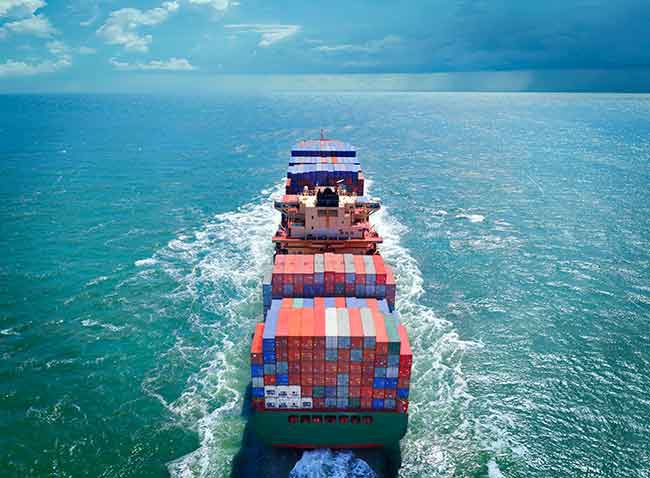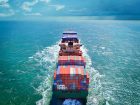
Features
Fabrication
Processing & productivity
Quality Offshore
How to gain the benefits, not the penalties, of offshore envelope.
August 4, 2016 By Thomas Trudeau
 Offshore building envelope products arriving on our shores is a reality that is not going away. Understanding how to extract the best from overseas providers may be your best route to success. Photo: Istock
Offshore building envelope products arriving on our shores is a reality that is not going away. Understanding how to extract the best from overseas providers may be your best route to success. Photo: IstockWe live in a globalised world. Global trade is a fact of life and is becoming increasingly prevalent in the construction industry now more than ever. Arguably the sector most affected by this shift is Section 8, glass and building exteriors.
One needs only to look around the downtown core of any major North American city to see towers that have been clad in curtainwall panels from China or South Korea. If one looks closely, they may also notice that these buildings are, in some instances, highlighted by the pockmarked plywood window infills that have yet to be replaced. Perhaps all the balcony doors are missing. Or, a tower crane has become a semi-permanent installation. While using offshored material has its benefits to suppliers in both in terms of price and capacity, there are related risks. Mitigating these risks is crucial to ensuring the success of your project or supply chain endeavour.
Challenges
One of the challenges of using offshored suppliers is what I refer to as “known unknowns.” These are difficult to define because you don’t know what the issue is until it’s too late. Because you are dealing with different business cultures, ethics, local quality standards and practices, and a range of other aspects which impact production quality, things come up that need to be nipped in the bud before they snowball out of control. Problems are not always the result of malicious intent, but may be simply due to a lack of understanding or acceptance of the need to meet higher standards.
One root cause of known unknowns can be found in the culturally engrained idea of saving face. Instead of risking looking incompetent to their superior or client, a worker or manager may just find a work-around that makes the problem “go away,” or, more likely, shift to the next guy. A great example of this I will always remember was when a line worker found that applying weather seal around the interior perimeter of a backpan assembly was not feasible due to the unique panel configuration (a valid issue). Instead of red flagging this to his superiors, he decided to improvise and seal the exterior perimeter of the louvre insert instead. Not only would this have resulted in major water infiltration issues, it would have required extensive remediations once the panels were installed on site. Luckily, in this case, the modification was spotted early on and only a dozen or so panels required remediation. I cringe to think what the result would have been had no one identified this issue.
The above example raises another common issue with many Asian suppliers. You cannot expect the typical factory worker to have much if any understanding of the “why” of what they are doing. With this is mind, we cannot fault the worker for not understanding that what he was doing was incorrect. However, due to the need to save face, he was unwilling to be the one to delay production by bringing up the issue with his superior.
I touch on this on the mitigation section of the article, but in order to reveal the known unknowns, one needs to have eyes on production and a competent intermediary to identify and rectify these issues as they arise.
“Quality fade” is a term recognised by most individuals who have had issues with offshore suppliers, coined by Paul Midler in his book Poorly Made In China. This phenomenon occurs when suppliers are eager to secure business with you and will bend over backwards to make that happen. The fade aspect comes into play once the supplier has secured the contract, and is off hunting for the next one. They stop paying as much attention to your product quality and start concerning themselves with product quantity. This can metastasize with systemic issues not dealt with and snowball over time, or it can be more malicious by intentionally incorporating cheaper material substitutions and/or using less material than required. A good example of intentional quality fade is having an aluminum extruder speed up or slow down extrusion rates, resulting in thinner profile walls in the mid-section of a given length. An inspector may look at both ends of the extrusion and they look fine, however if you were to cut open the middle, it would be a different story. Another example is the conscious inclusion of defective materials in production to complete the order as quickly as possible.
Production speed, usually one of the benefits of going offshore, may also result in quality fade. It is quite common for line managers and QC inspectors to receive financial bonuses for quantity not quality. This seems counterintuitive and it is. When there is actually personal financial incentive to fill containers as quickly as possible, one can imagine how easy it would be to look the other way when issues would hold up production. Because – shocking as it may seem – that quality inspector in Beijing does not especially care if some windows in Toronto leak.
To add to the above phenomena, there is often a significant disconnect between the project managers and factory staff in larger facilities. While management may be really involved in the start-up of production, once it is fully underway, as long as shipments are on time, they are doing their job. This disconnect can make resolving quality issues difficult to do from a distance. Confusion and misinformation can result from a lack of communication between these two critical elements of a supplier.
One of the more challenging aspects of using a supplier on the other side of the world is coordination and oversight. It becomes difficult and tedious to chase after and monitor changes, remediations, replacement materials and all the other fluid elements that go into a production process. This, in combination with the communications issue between the office and the fabrication shop, may result in more complications and delays.
MITIGATION STRATEGIES
While there are challenges to be overcome when choosing to use an offshored supplier, it can be a profitable venture with adequate oversight and employment of mitigation strategies. The following are several strategies that help ensure a successful project.
It is crucial to make sure the supplier you are using has the equipment, knowledge and capacity to provide the required product. Most will advertise themselves as having this capability even if it is not the case. In some cases, they may simply take the contract and then subcontract it out to an unknown supplier who does have the capacity. This introduces an element of uncertainty and potential for quality issues. Make sure to identify and review the production capacity of all subcontractors. Suppliers who have mainly worked on Asian projects can be excellent choices to introduce overseas, however they also may be stuck in their ways and not understand or think necessary the changes in process and quality that are required. It is critical that a facility is reviewed, in person or by a credible third party, to ensure they fit the bill.
Money talks. This is true in any industry in any country. However, in the case of overseas supply, it holds more true than ever. Having a carrot on a stick in the form of future contracts will help encourage suppliers to meet your requirements. If they think there is potential for more work, they will see the value in putting in the extra time and effort on your job. On the other hand, if they see the project as a one-off deal, they will be less inclined to accommodate. By building a relationship and fostering the idea of mutual benefit, you will be able to demand a higher production quality.
Suppliers may have in-house quality assurance/quality control manuals, and sometimes these are sufficient to be adapted to your project. There have been cases however where a supplier has, for example, indicated that 100 per cent of incoming material will be checked. This looks great on paper but is one of many potential red flags. Will they actually check 100 per cent of materials? Absolutely not. The very fact they are saying this indicates a level of unscrupulousness. Once a supplier is selected, it is a good idea to sit down and develop or refine a project-specific QAQC plan. Plans should at a minimum define batch sizes, sample rates and related standards. This will serve several purposes. First, it is you setting the bar for your project quality standards. Second, this is the stage at which a supplier may ask questions without losing face or time and money. Last, it provides a framework for subsequent production reviews. The majority of suppliers, especially ones looking to break into the North American market, are willing to adopt your quality requirements as long as they are not unreasonably burdensome.
It is critical that once a QAQC plan is established, periodic reviews of production and quality records be carried out. There is a tendency in the industry to have intensive checks up front, then taper them off after some initial good results. To be sure, intensive initial production reviews are beneficial, however, the key to consistent quality is consistent review. If a supplier knows that their work will be inspected on an ongoing basis, there will be more pressure to do the job right. This helps negate quality fade, maintain communication and catch any known unknowns before they become a major issue.
- Offshore building envelope products arriving on our shores is a reality that is not going away. Understanding how to extract the best from overseas providers may be your best route to success.
MOVING FORWARD
Once all the above have been established, you are in pretty good shape to move forward with production. There is, however, one major component I feel is often overlooked: doors and windows. These are complex systems and are also critical to the building performance. After the initial PMU tests (which are usually given extensive attention to quality), there is very little tangible inspection of these units until they arrive on site or, sometimes, until the majority have been installed. In a typical construction job, windows and doors are tested in-situ and often times small adjustments or remediations are required. This becomes more complicated when your window and door supplier is thousands of kilometers away. For this reason, it is highly recommended that operable systems are periodically tested in the factory, prior to shipping and throughout production. Including these tests as a requirement to for overseas suppliers should be industry standard, or adopted as best practice. Having a third party conduct these tests will ensure that they are done in conformity with performance standards and are reported on in a non-biased way. This serves two purposes. First, if failures occur, remediations can be identified and carried out on all units prior to shipment. Secondly, failures can be directly attributed to fabrication and not installation.
This article is not intended to scare you away from using an overseas supplier. It is simply to raise awareness of considerations that would not normally be required when using a domestic supplier. There are many benefits to going overseas. Price is the obvious one. On top of that, capacity is often much larger both in terms of ability to produce more in a shorter time and also to produce specialised product more readily. Often times, the cost of implementing production oversight is outweighed by the savings gained. Get the best of both worlds. Do not sacrifice product quality for product cost. Done right, using offshored suppliers can have enormous benefits to your bottom line and production capacity.
ABOUT THE AUTHOR
Thomas Trudeau is the owner of Bridge Facades, a QAQC and supply chain consulting company based out of Seoul, South Korea, and operating across Asia. He can be reached at ttrudeau@bridgefacades.com
Print this page

